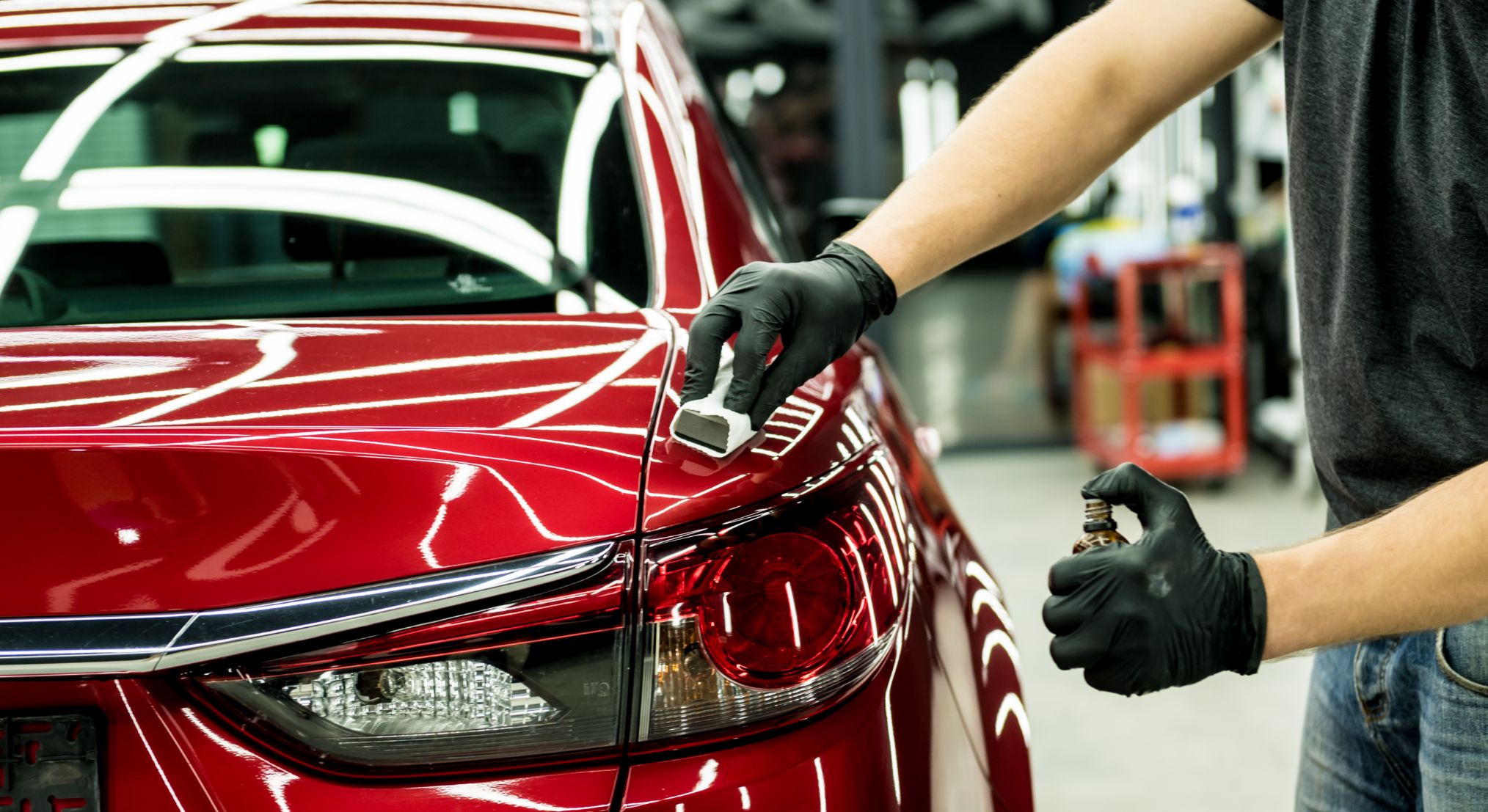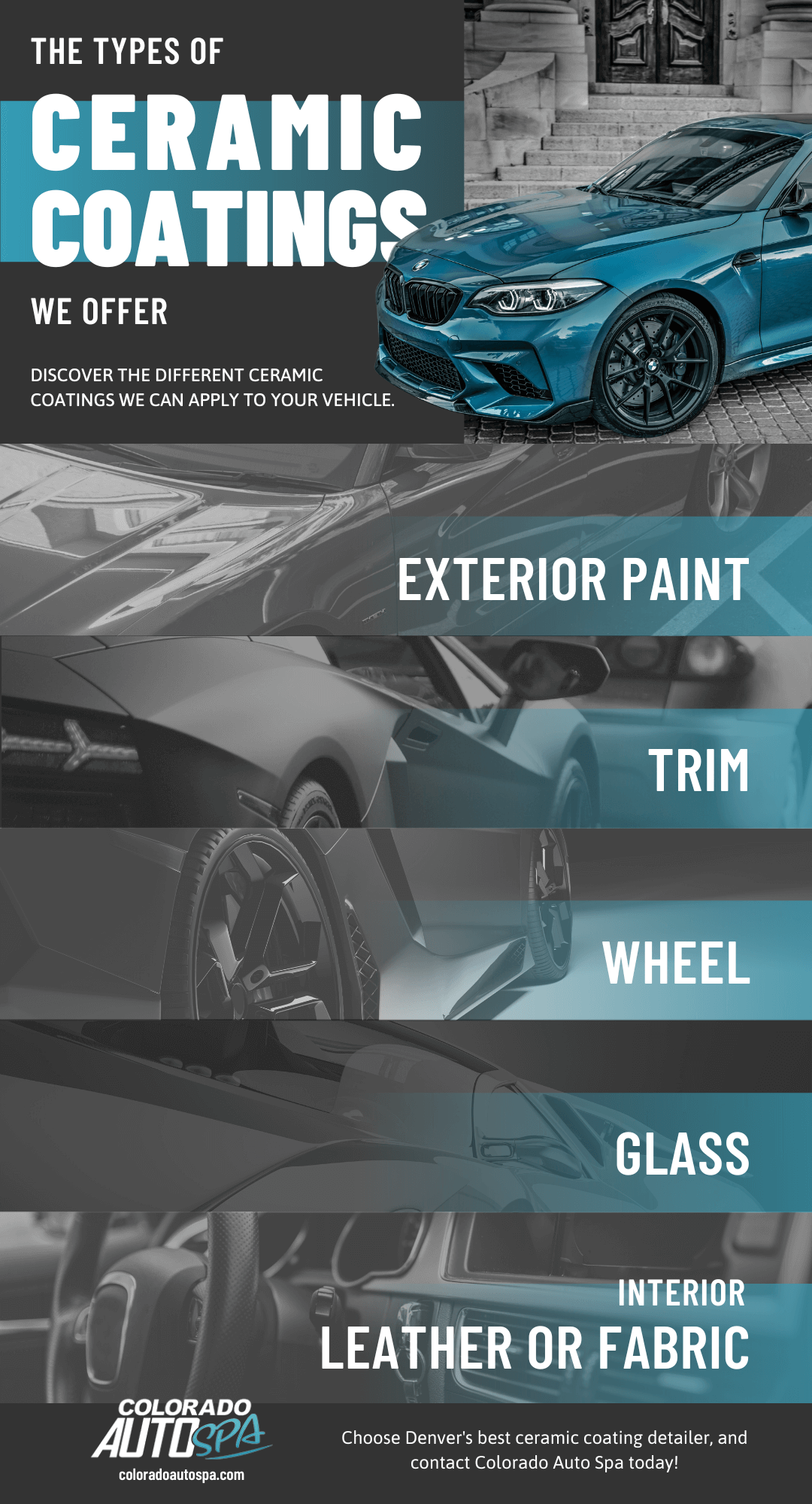Why Ceramic Coating Is Essential for Maintaining Your Car’s Paint
Why Ceramic Coating Is Essential for Maintaining Your Car’s Paint
Blog Article
Ceramic Layer vs. Traditional Wax: Which Offers Better Long-Term Defense?
The argument between ceramic layers and conventional wax for vehicle defense has actually amassed considerable attention among vehicle enthusiasts and specialists alike. Ceramic finishings flaunt superior longevity and resistance to ecological factors, yet the intricacy of their application increases questions regarding availability and usefulness.
Summary of Ceramic Coating
Ceramic finishing has acquired considerable appeal amongst vehicle enthusiasts and detailers alike as a result of its sophisticated protective high qualities. This cutting-edge technology is created to produce a resilient, hydrophobic guard over a car's paint surface, considerably boosting its resistance to ecological impurities such as dirt, UV rays, and chemical stains. Unlike typical wax, which supplies a temporary layer of defense, ceramic layers bond at a molecular level with the paint, providing long-lasting durability-- frequently expanding past two years with appropriate maintenance.
The application process involves meticulous prep work of the automobile's surface area, including cleaning and brightening to guarantee ideal attachment. As soon as used, the coating cures to form a durable layer that not just includes deepness and gloss to the paint however also streamlines maintenance. With its hydrophobic properties, ceramic layer allows water and dust to slide off even more easily, minimizing the regularity of washes and minimizing the threat of swirl marks.
Additionally, ceramic finishings are available in different solutions, permitting individuals to select products tailored to their specific demands and preferences. In general, ceramic finishing represents a significant development in paint protection modern technology, supplying remarkable efficiency contrasted to standard choices.
Introduction of Traditional Wax
Typically considered a staple in automotive care, wax acts as a popular choice for those seeking a straightforward technique to enhance and safeguard their car's paint - ceramic coating. Automotive wax generally comprises all-natural ingredients, such as carnauba, or synthetic compounds, designed to produce a protective layer on the surface of the paint. This layer not just boosts the car's gloss and shine but also supplies an obstacle against environmental impurities
The application of wax is usually user-friendly, making it accessible for both professionals and do it yourself enthusiasts. It can be used by hand or equipment, permitting adaptability in the outlining procedure. When used, wax calls for a healing duration, after which it solidifies to develop a protective shell. Wax is also known for its capacity to push back water, promoting a beading impact that helps in the prevention of water areas and rust.
Nonetheless, while wax is efficient for enhancing the visual appeal of a lorry, it is very important to note that the security it provides might necessitate more constant reapplication compared to alternate items, such as ceramic coatings. Overall, typical wax continues to be a preferred option for those prioritizing ease of use and instant aesthetic improvement.
Longevity and Long Life Contrast
While both ceramic coatings and standard wax offer protective advantages for vehicle paint, their toughness and durability differ dramatically. Standard wax, typically made from all-natural carnauba or synthetic polymers, usually provides a safety layer that lasts approximately three to 6 months. This fairly brief life expectancy demands normal reapplication to keep optimal defense.
On the other hand, ceramic layers are crafted from sophisticated nanotechnology, forming a covalent bond with the paint surface area. This results in a durable, hydrophobic layer that can endure for 2 to 5 years, relying on the product and ecological problems. The remarkable toughness of ceramic layers is credited to their chemical framework, which supplies enhanced resistance home to scrapes, UV rays, and oxidation.

Protection Against Ecological Aspects
Safeguarding a vehicle's paint from environmental variables is vital for keeping its look and value gradually. Automobiles are constantly revealed to a range of aspects, including UV rays, bird droppings, tree sap, acid rainfall, and road gunk, every one of which can jeopardize the stability of the paintwork.
Ceramic coverings give a durable defense against these environmental aggressors. Unlike conventional wax, which can weaken promptly under UV exposure, ceramic coverings create a long lasting, hydrophobic layer that resists the dangerous impacts of sunlight and toxic wastes. This sophisticated modern technology creates a chemical bond with the lorry's surface area, using exceptional protection that lasts for many years, also in harsh conditions.
Conventional wax, while less complicated to use, normally calls for regular reapplication and provides limited resistance to impurities and UV rays. Gradually, it can break down, leaving the paint vulnerable to scratches and oxidation. In comparison, ceramic coverings maintain their protective top qualities longer, dramatically lowering the risk of paint damage and making sure that the lorry keeps its visual charm. Consequently, ceramic finishings are progressively identified as the remarkable choice for lasting defense against ecological factors.
Application and Maintenance Differences
The techniques of application and succeeding upkeep for ceramic finishings and conventional wax differ considerably, impacting the total customer experience and efficiency of each item. Ceramic finishings require a more intricate application procedure, typically involving surface prep work that includes cleaning, decontaminating, and brightening the car. As soon as the surface is ready, the ceramic coating is applied in a regulated setting, commonly needing specialist knowledge to ensure proper treating and bonding to the paint.

While both products improve car look, the longer-lasting security offered by ceramic coverings might warrant their initial financial investment, regardless of the more requiring application procedure. Alternatively, typical wax remains a popular selection for those seeking a less complex, albeit short-term, solution.

Conclusion
To conclude, ceramic coverings demonstrate substantial advantages over traditional wax in terms of durability and environmental management. With a life expectancy extending 2 to 5 years and remarkable resistance to UV rays, dust, and chemical discolorations, ceramic coverings use a much more effective option for long-lasting automobile upkeep. The application process may need professional competence, the resulting expense savings and reduced frequency of reapplication underscore the worth of ceramic layers for those looking for optimal car security.
The discussion between ceramic layers and typical wax for vehicle protection has amassed substantial focus among automobile enthusiasts and professionals alike. Unlike conventional wax, which gives a temporary layer of security, ceramic finishings bond at a molecular level with the paint, supplying long-lasting resilience-- often prolonging past 2 years with correct upkeep.
While both ceramic coverings and standard wax offer protective advantages for auto paint, their durability and longevity differ substantially. For vehicle fanatics looking for long-term security, ceramic finishes provide a compelling advantage over traditional wax items.
In conclusion, ceramic finishings show considerable advantages over conventional wax in terms of longevity and environmental security.
Report this page